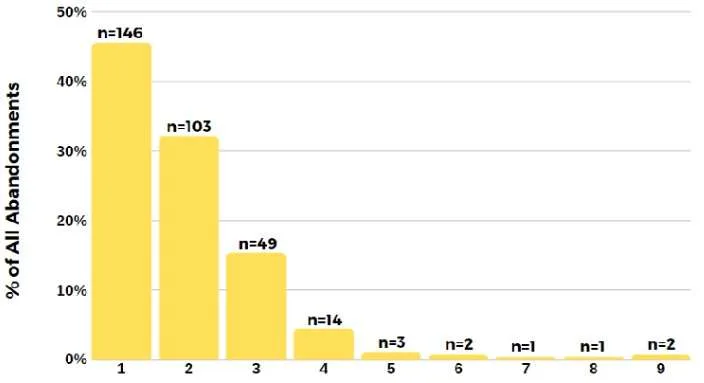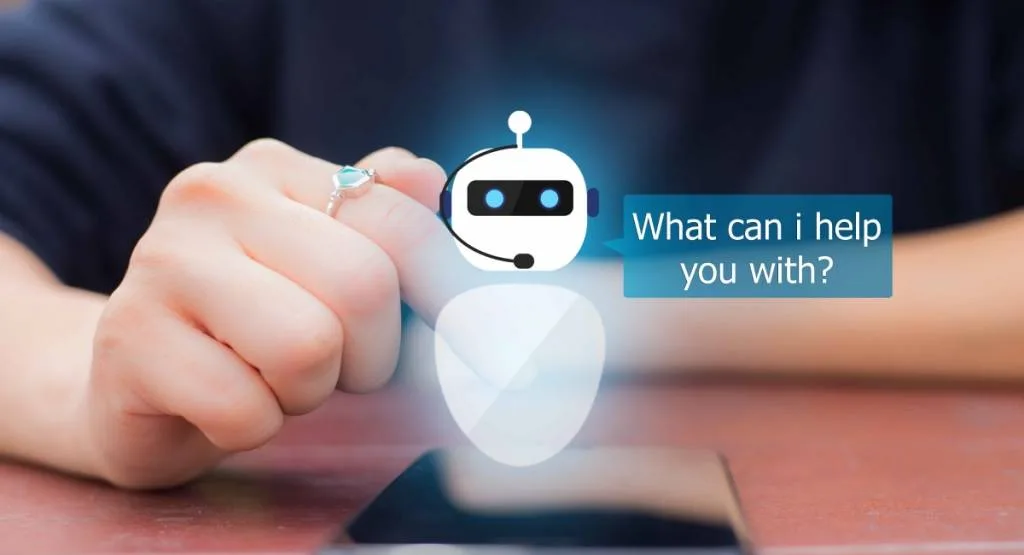Chatbots have become increasingly popular in recent years, with many businesses using them to improve customer service and reduce costs. However, not all chatbots are equal, so here’s why customers don’t like or hate chatbots, with many causing more frustration than they solve. 53% of survey respondents say chatbots are annoying.
Many chatbots are programmed to respond to specific keywords or phrases, which can make the interaction feel robotic and impersonal. Customers want to feel like they are being heard and understood, and when a chatbot fails to respond appropriately, it can cause frustration
Let’s explore why customers and clients don’t like or hate chatbots
- One of the primary reasons customers may not like chatbots is the lack of personalisation.
Chatbots often lack the ability to understand context, which can lead to irrelevant or unhelpful responses. A perfect example of this is when a customer may ask a question about a specific product, and the chatbot may respond with a generic message that doesn’t address their concern. This alone will almost always leave customers feeling like their needs are not being met and will also lead to anger and frustration.
- Inability to Resolve Complex Issues
Customers don’t like chatbots due to the inability to resolve complex issues. While chatbots are useful for simple inquiries, they often fall short when it comes to more complex problems due to feeling like they are being passed around in a never-ending loop of automated messages.
- Lack of Human Interaction
Customers value and respect human interaction, chatbots often fail to deliver on this front. While chatbots can be useful for basic inquiries, customers may become will become frustrated when they need more personalised attention.
Customers may feel like they are not being heard or valued when they are interacting with a chatbot, leading them to turn their backs on businesses that use them. Customers want to feel like they are valued and appreciated, and when a business fails to deliver on this front, they may take their business elsewhere.
- Lack of Trust
Customers may not or don’t like chatbots because they lack trust in the technology. Chatbots are still relatively new, and some customers may be skeptical about their capabilities. Additionally, some customers may worry about their privacy and data security when interacting with chatbots
- Chatbot Privacy and data security concerns
Another of the main concerns when customers user chatbots is data privacy. When customers interact with a chatbot, they may be providing personal information such as their name, address, and payment details.
If this information is not properly protected, it could be vulnerable to theft or misuse. Additionally, some customers worry that their conversations with chatbots may be recorded and used for marketing or other purposes. (And it often is)
- There is lack of transparency around how customer data is being used.
Customers may not know what information is being collected, how it is being used, or who has access to it. This lack of transparency can erode trust in the business and discourage customers from using chatbots and move away from the business.
Some businesses are not transparent about how they are using customer data and don’t provide clear opt-out options for customers who do not want their data to be collected or shared.
- Accuracy of the information being collected by chatbots.
In some cases, customers may also be worried about the accuracy of the information being collected by chatbots. If a chatbot is programmed to ask personal questions, it may not always understand the context or provide accurate responses. This can lead to misunderstandings or even mistakes in customer data, which could have negative consequences down the line.
- Time Consumption.
The truth is, chatbots are driving customers insane. It’s an utter disappointment and frustration for them every time they have to deal with a chatbot. Recent research conducted in 2021 shows that customers rate their chatbot interactions as “poor” when they are kept waiting for longer than 47 seconds to get their issue resolved.
To make matters worse, a recent study by Simplr revealed that customers are willing to wait up to a whopping 13 minutes just to be transferred to a human! This means that customers are forced to endure a time-consuming, exasperating and ultimately disappointing experience whenever they interact with a chatbot. It’s no wonder why many customers hate chatbots with a passion.
Poor Chatbot Study Findings
Astudy uncovered a shocking generational divide in terms of customer service preferences. A mere 4% of Boomers prefer to start with a chatbot, while a staggering 71% of them want to speak with a live agent on the phone.
In stark contrast, 20% of Gen Z consumers actually prefer starting their customer service interactions with a chatbot. This means that the younger generation is completely out of sync with the Boomers when it comes to customer service preferences. It’s a drastic difference that could spell trouble for businesses trying to cater to both demographics.
It’s an absolute nightmare for businesses that use uninitiated chatbots. Study results also revealed that only a measly 20% of customers actually welcome the intrusion of chatbots on a website when they are not actively seeking help. However, the level of frustration and anger experienced by Boomers when faced with uninitiated chatbots is beyond comprehension.
A whopping 53% of Boomer respondents indicated that these intrusive chatbots were nothing more than a nuisance that “annoyed” them to no end.
This is a drastic difference that can’t be ignored. Businesses that continue to rely on uninitiated chatbots to push their products or services may end up driving away their most loyal customer base. The consequences of such a misstep could be catastrophic for any business looking to thrive in today’s cutthroat market.
1,000 of vendors offering chatbot solutions– It’s impossible to escape them
It has become almost impossible to escape chatbots in 2023, they are everywhere, lurking in every corner of the internet.
According to Gartner, there are over 1,000 vendors offering a chatbot solution, and the numbers keep growing. It’s as if there’s no end to their reign of terror.
The worst part? The spending on these chatbots is expected to skyrocket to a terrifying $142 billion by 2024, up from $2.8 billion in 2019, as predicted by Insider Intelligence.
If you’re working in customer experience, there’s a very good chance that you’re dealing with at least one of these robotic bot monsters right now. It’s a daunting task, trying to oversee and manage these soulless machines, knowing that they are causing frustration and anger among your customers.
It’s almost as if the future of customer service is at stake, and businesses are placing their trust in these cold, unfeeling chatbots to take care of their customers. It’s a terrifying thought that should send chills down anyone’s spine.
Proportions of users who abandoned chatbot use
A new study has revealed the shocking truth about chatbot usage: a staggering 45% of users abandon the service after encountering just one NP error. And the bad news doesn’t stop there.
A whopping 90% of long-term abandonments were caused by no more than three consecutive NP errors. It’s clear that even a minor flaw in the chatbot’s programming can have a catastrophic impact on customer retention.

As companies continue to invest billions in chatbot technology, these findings serve as a wake-up call that the stakes are higher than ever. Developers must prioritise improving their chatbot’s performance if they hope to retain customers.
The Common Misconception
It’s a common misconception that all chatbots are created equal, that they possess some sort of advanced intelligence that allows them to understand and respond to customer queries with ease. But the truth is far more terrifying than most people realise.
Some chatbots are nothing more than deterministic programs, lacking any form of true intelligence. These machines are nothing more than a collection of pre-programmed questions and answers, incapable of learning or adapting to the ever-changing needs of customers.
Those who build these bots must painstakingly sift through the bot’s transcripts, trying to figure out what questions they missed and the different ways in which site visitors are asking those questions.
They must then program in more questions and answers in a desperate attempt to improve the bot over time. It’s a slow, laborious process that often yields underwhelming results.
Organisations make the mistake of assuming that an English-speaking bot will be enough, given the popularity of the language. However, they fail to realise that not everyone who speaks English can write it fluently, and many non-native speakers lack confidence in their ability to communicate effectively in the language.
And what about the billions of people who don’t speak English at all? Are they simply left out in the cold, unable to access the services and products they need because of these soulless machines?
The future of chatbots is uncertain, and the consequences of relying on these unfeeling programs may be more catastrophic to a business then we ever imagined.
Chatbots are gradually taking over more and more business sectors, and the pandemic is accelerating growth of chatbot software solutions to help meet the needs of the workplace.
Those thinking about implementing chatbots for customer service, it’s important to understand why and how they will benefit your business and weigh this up against the negative
The Demand For AI-Based Customer Support Services
Major factors fuelling increased market growth include demand for AI-based customer support services and omnichannel deployment, as well as reduced chatbot development costs. This creates less stress for the business and more time to focus on human issues.
The rise of this technology can also lead to complications, especially when IT teams promise too much chatbot capabilities and fall short of expectations.
Research finds it imperative here for companies to invest and adapt, with Forrester recommending performing proof-of-concepts to evaluate conversational AI chatbot development tools.
Furthermore, research says that to secure the benefits of AI, companies need to consider more than just the technological capabilities of the AI tool they want to deploy.
Get ready to brace yourself for a dramatic impact on customer satisfaction as a report by Juniper Research has predicted that consumer retail spending on chatbots will skyrocket to an astounding $142 billion by 2024, marking a 400% average annual increase since 2019.
However, despite the impressive growth forecast, businesses need to tread cautiously as chatbot usage has been known to annoy and frustrate customers if not implemented effectively.
This begs the question: are companies willing to risk losing customers and damaging their brand reputation just to keep up with this latest tech trend?







